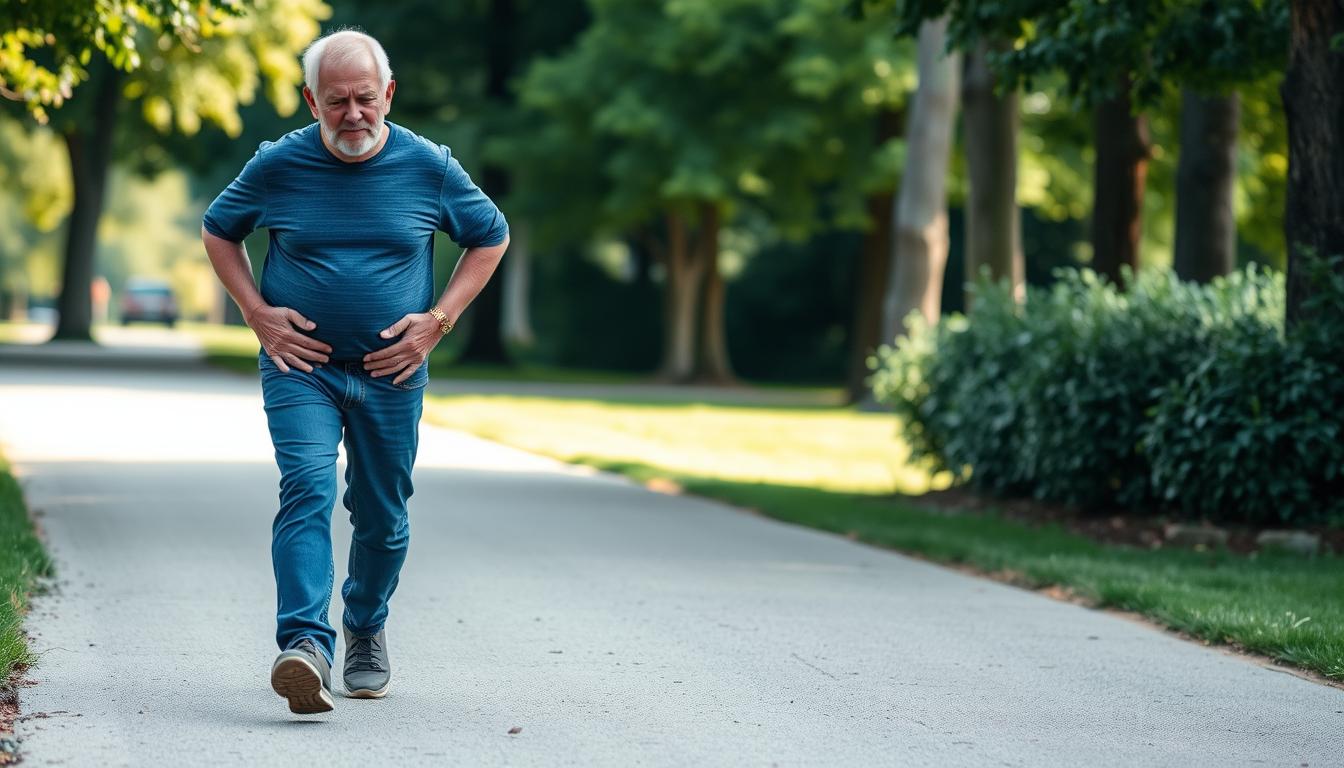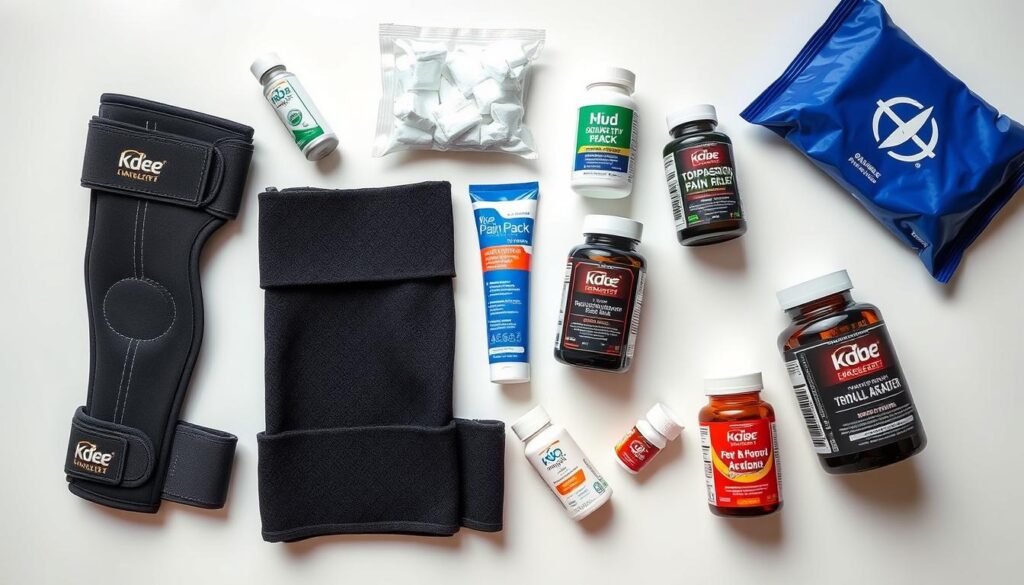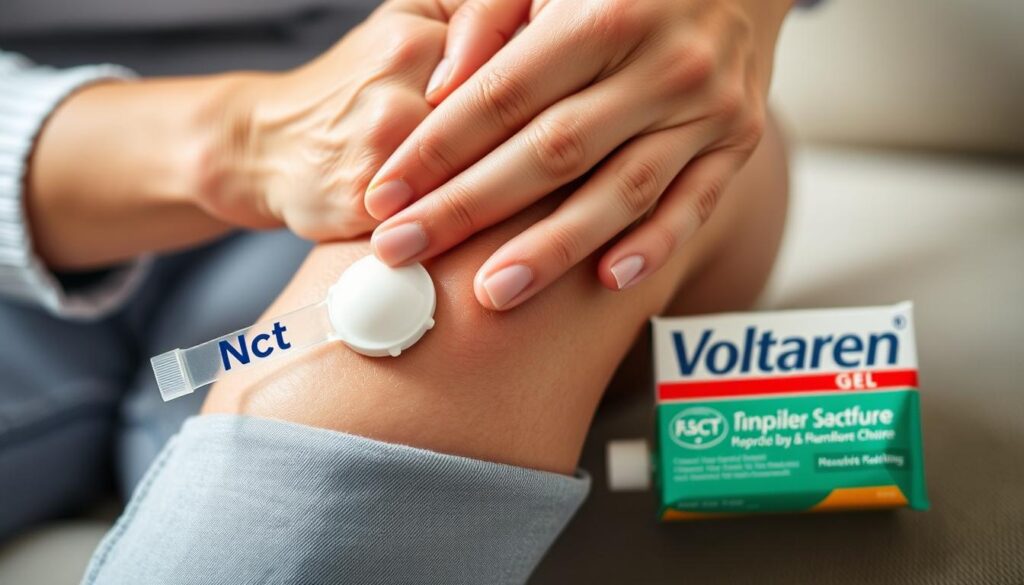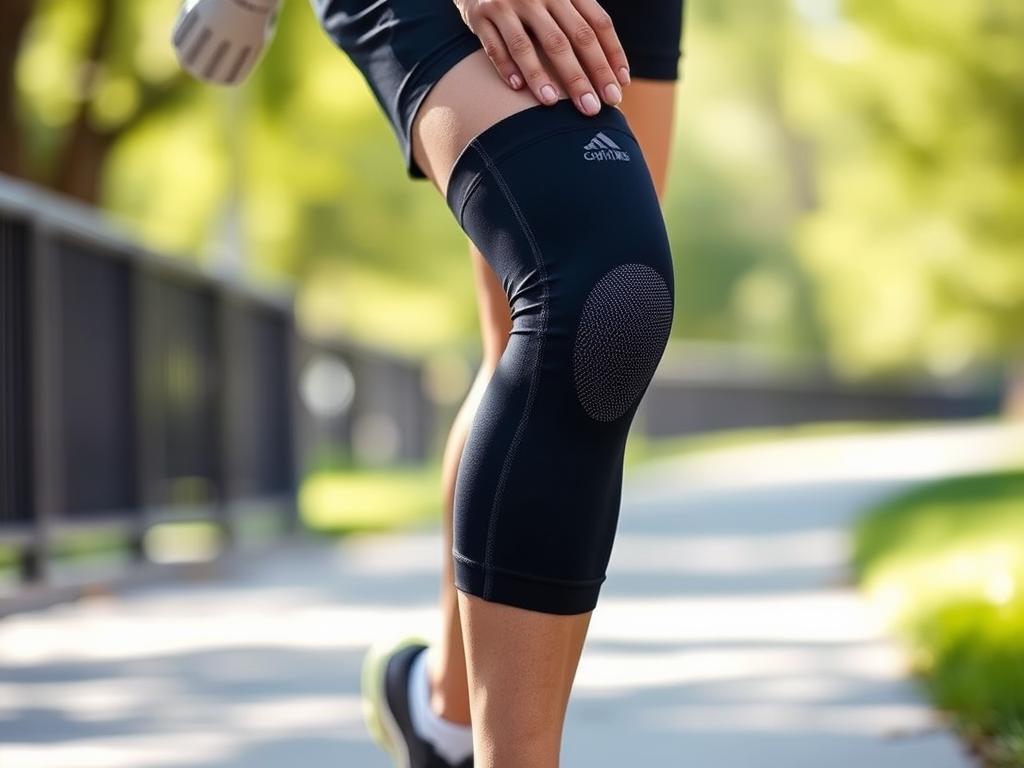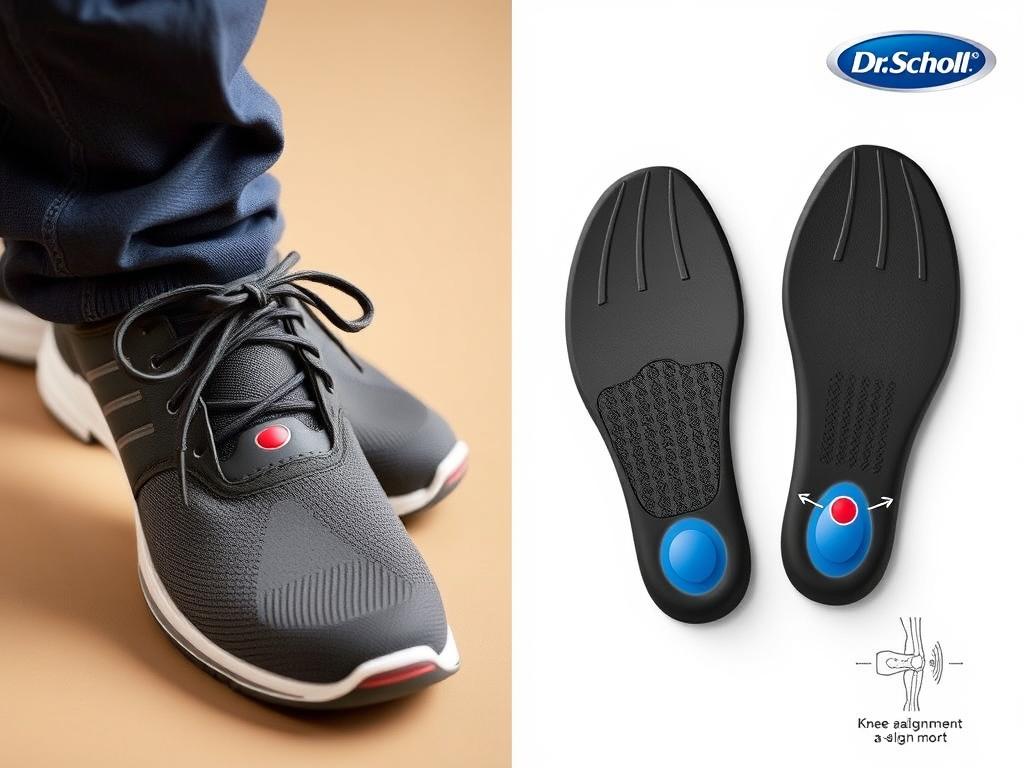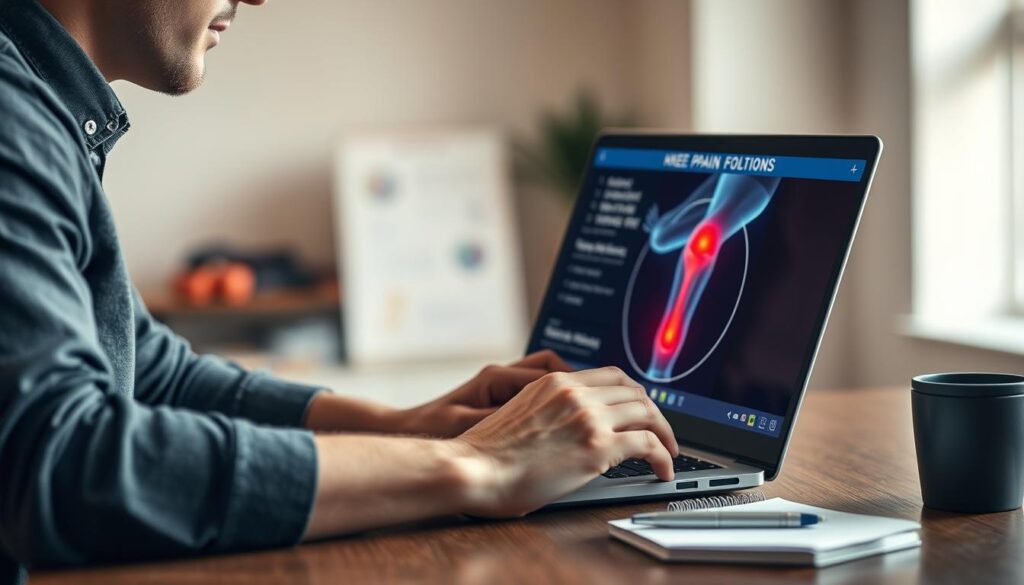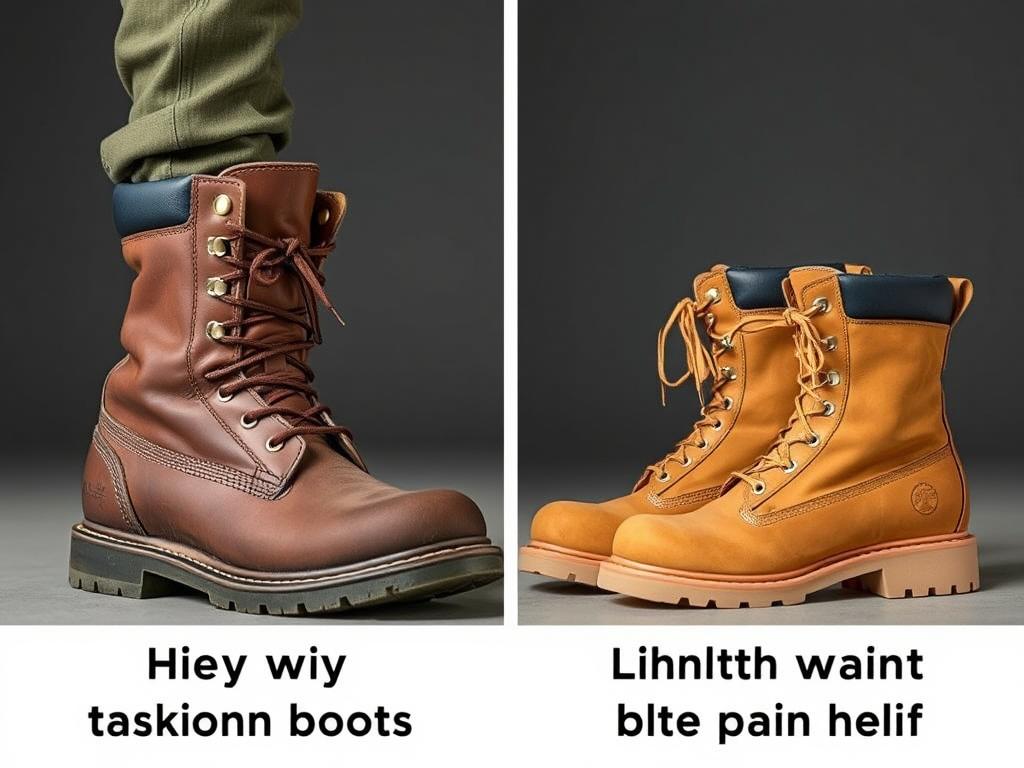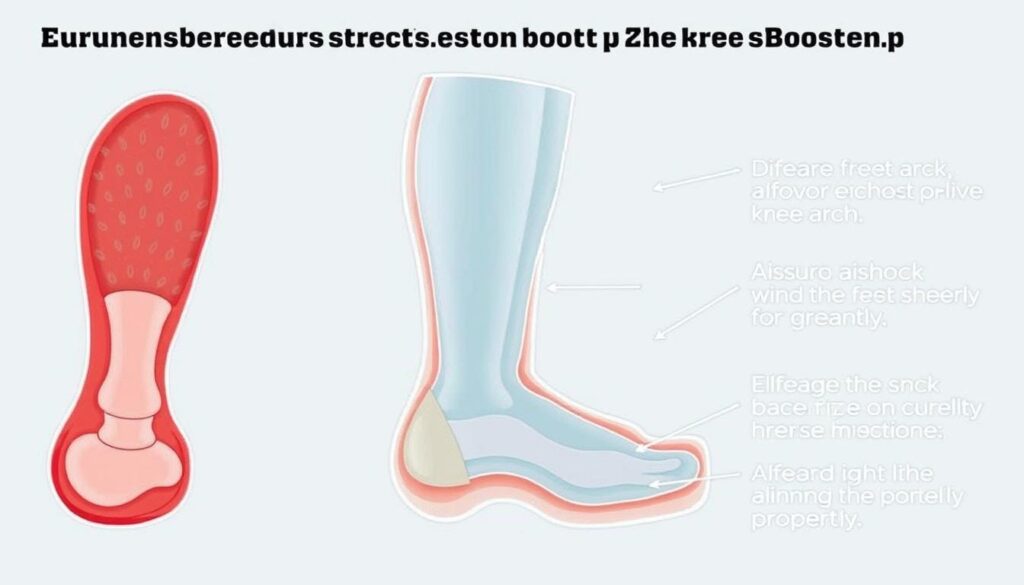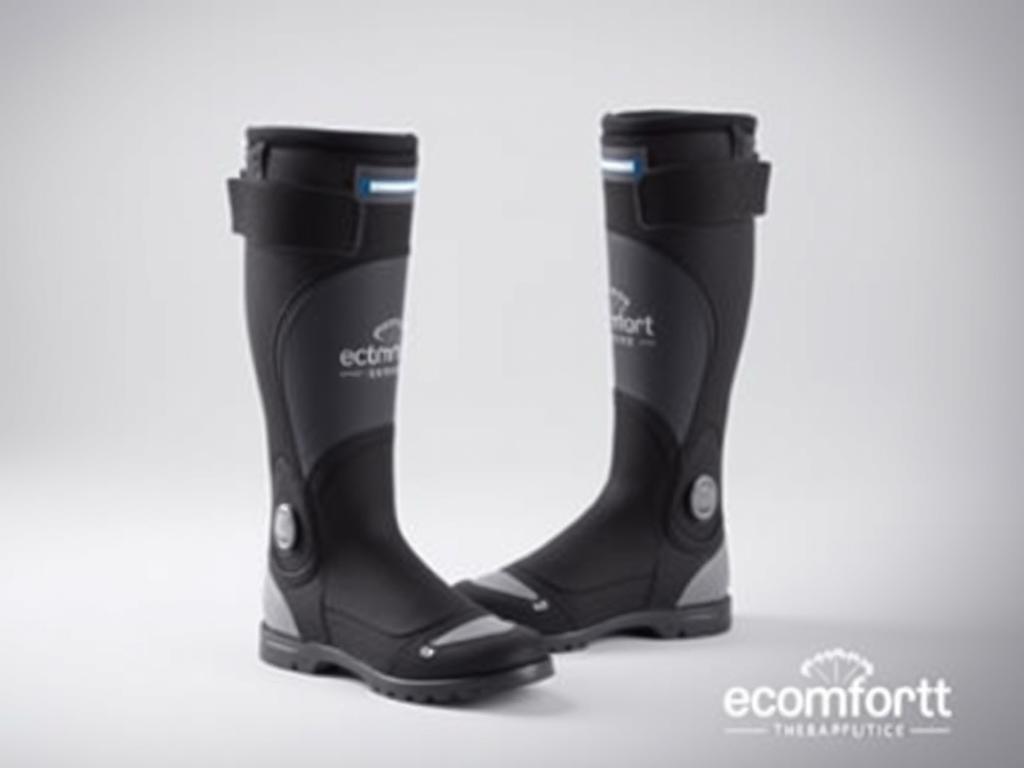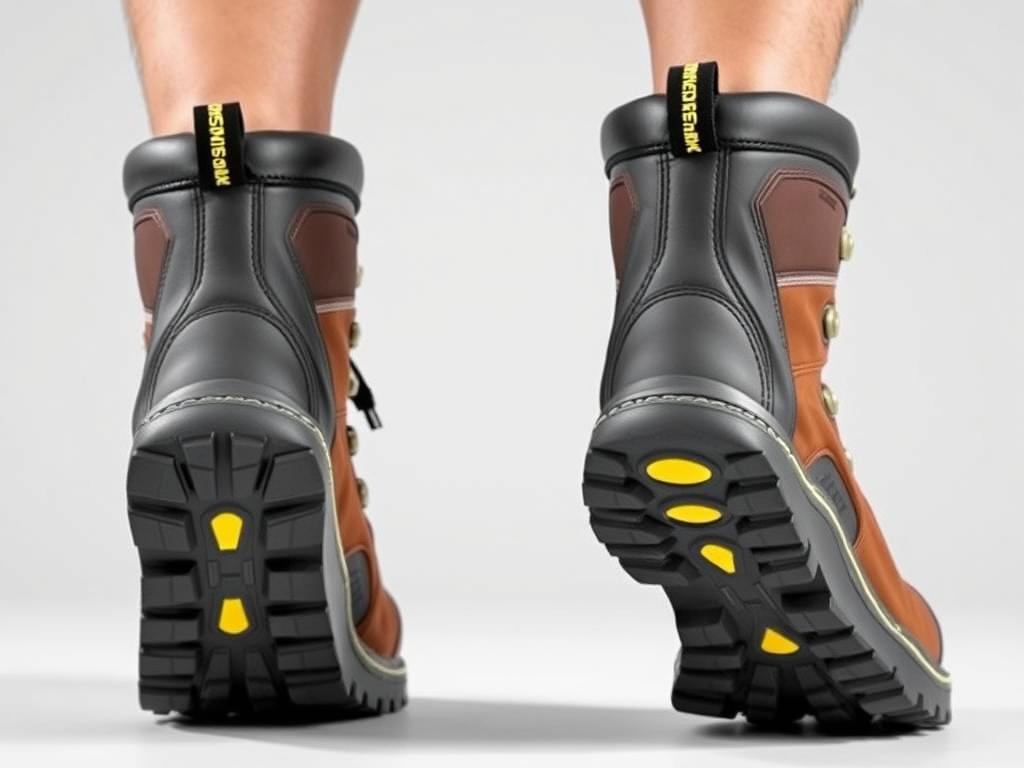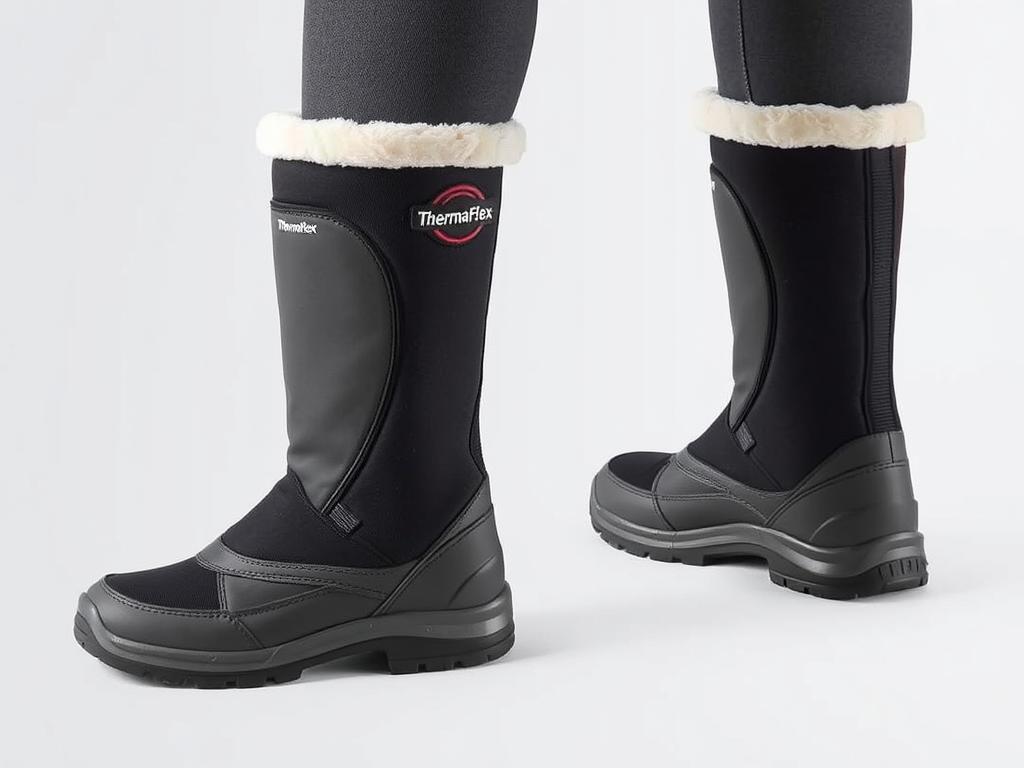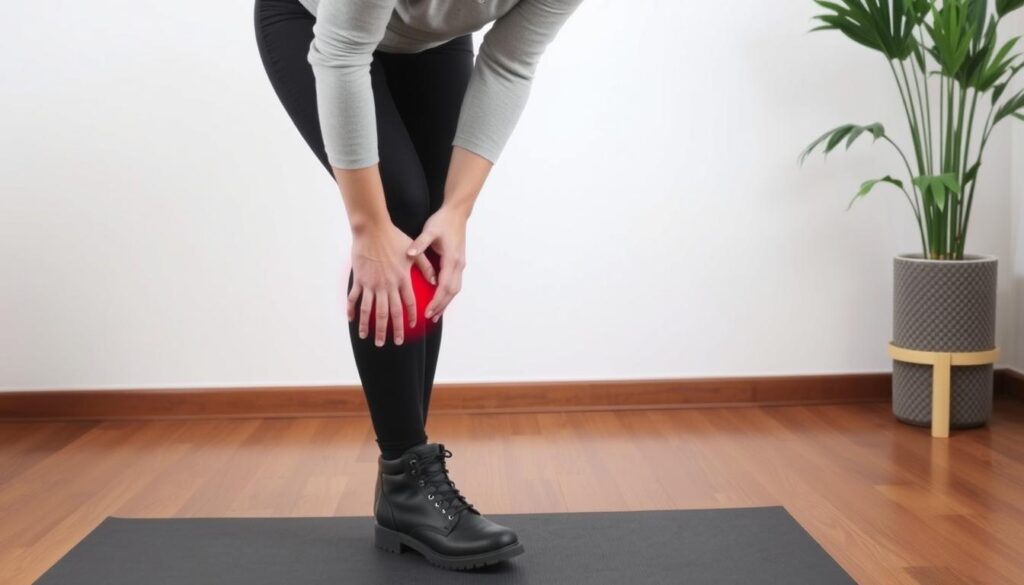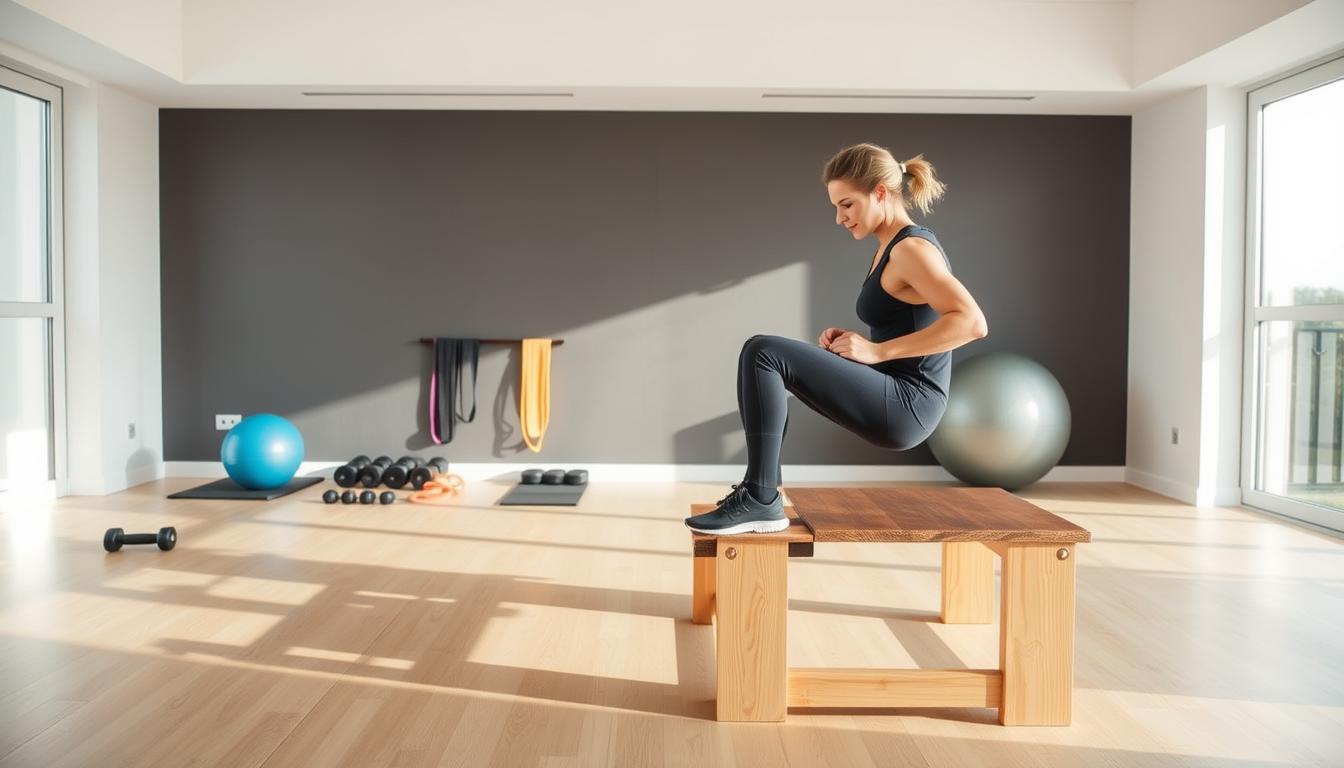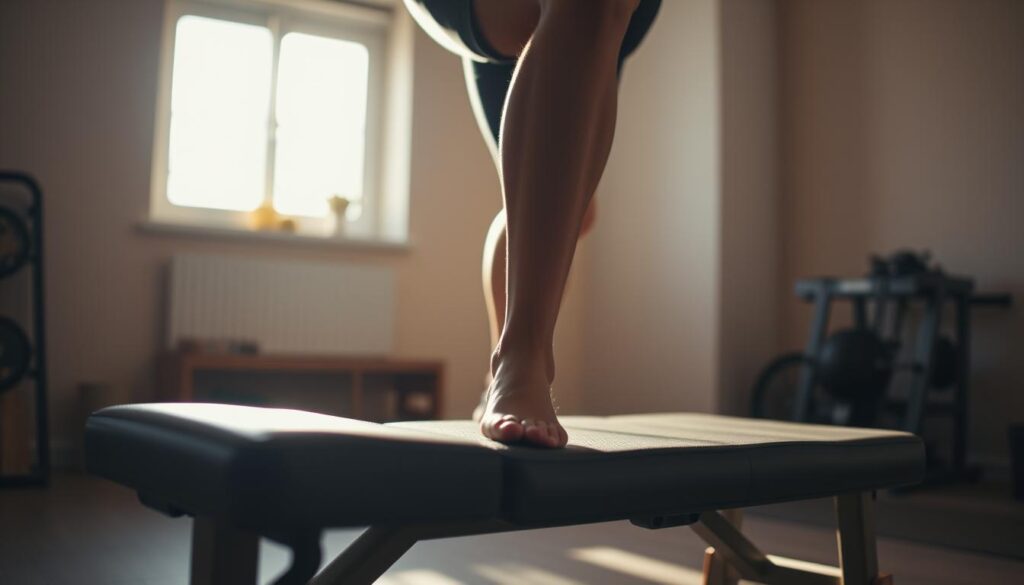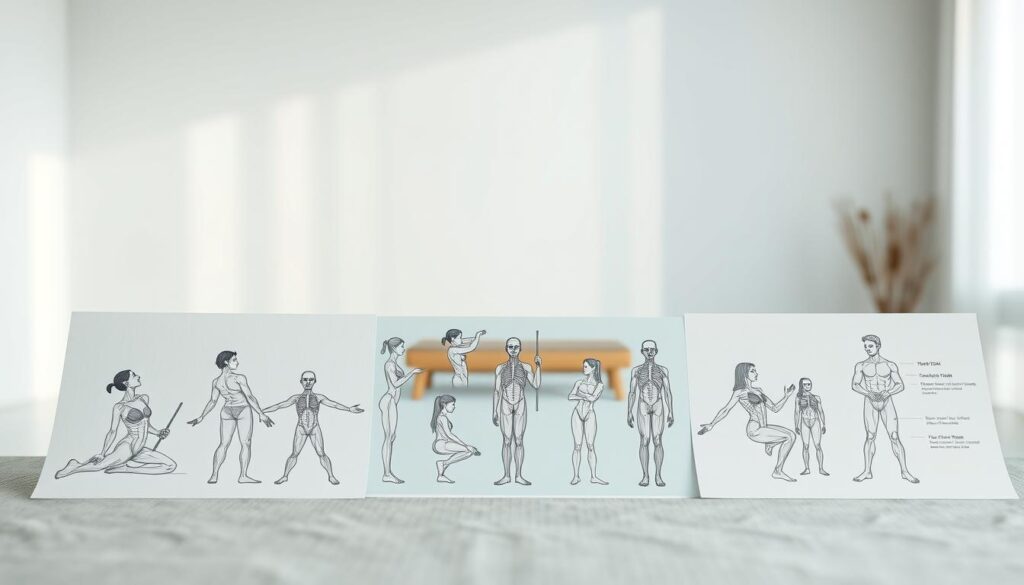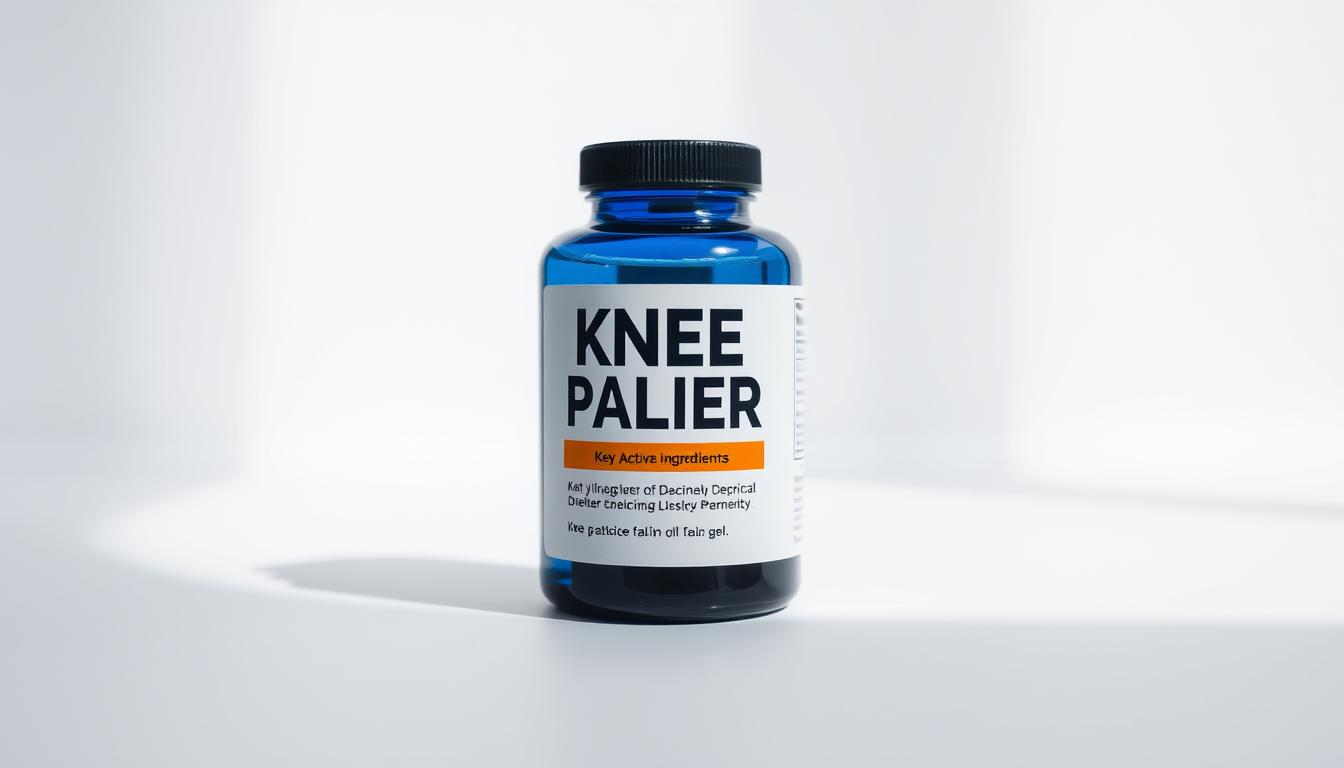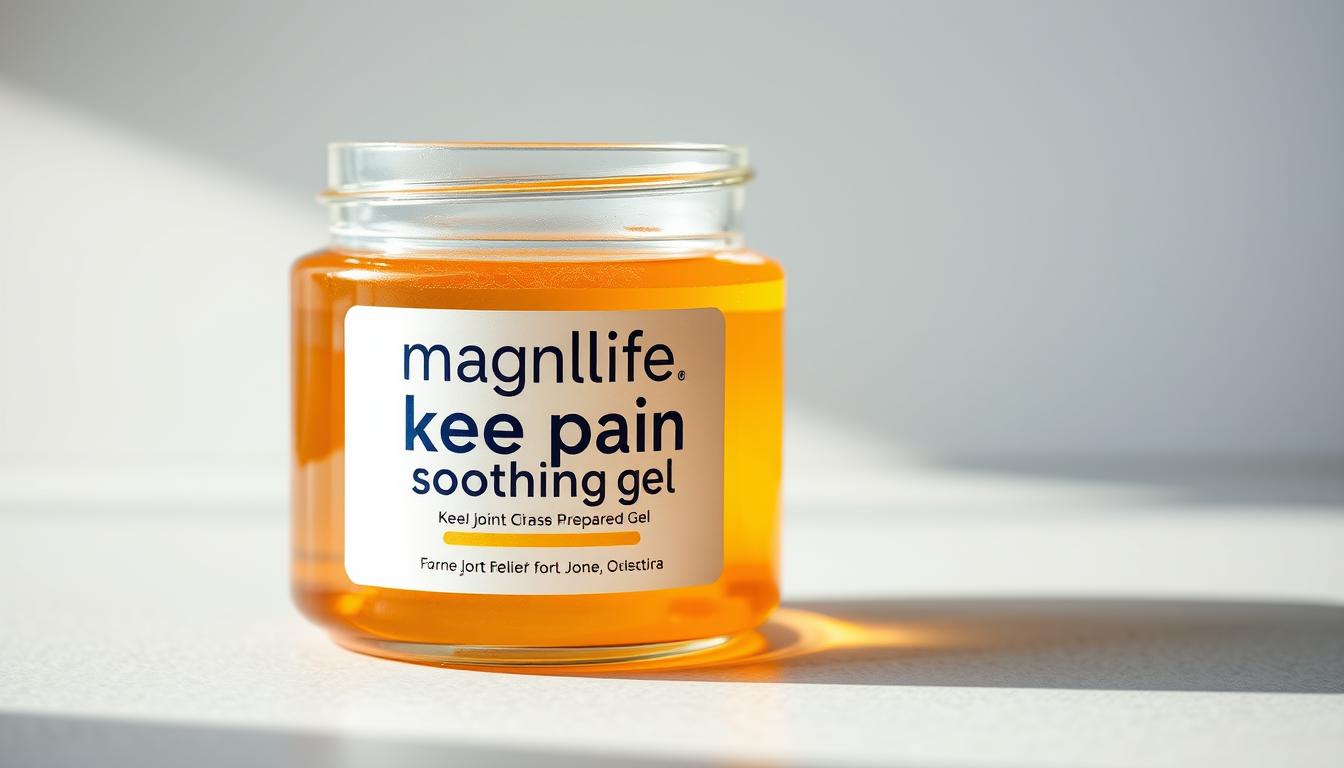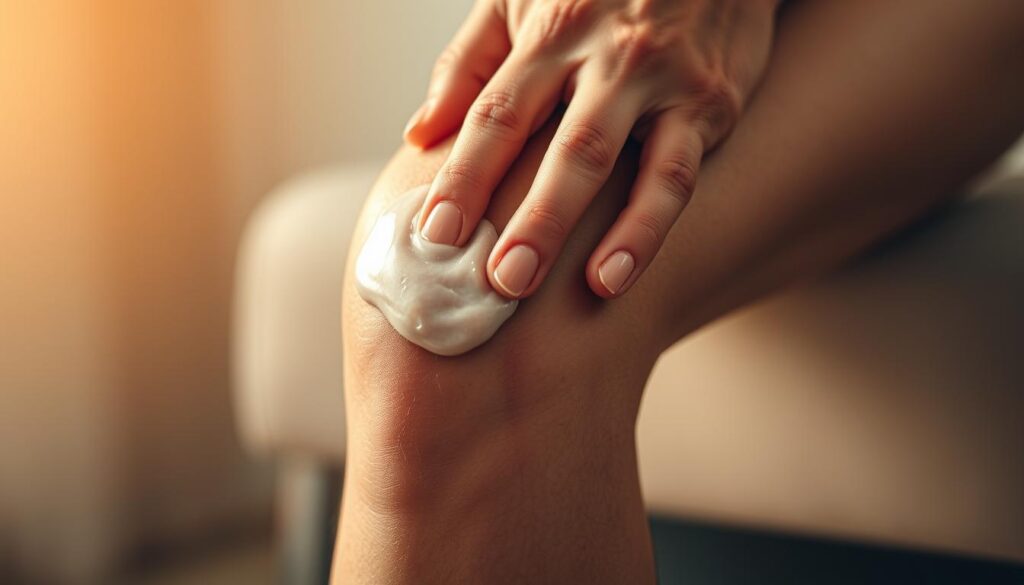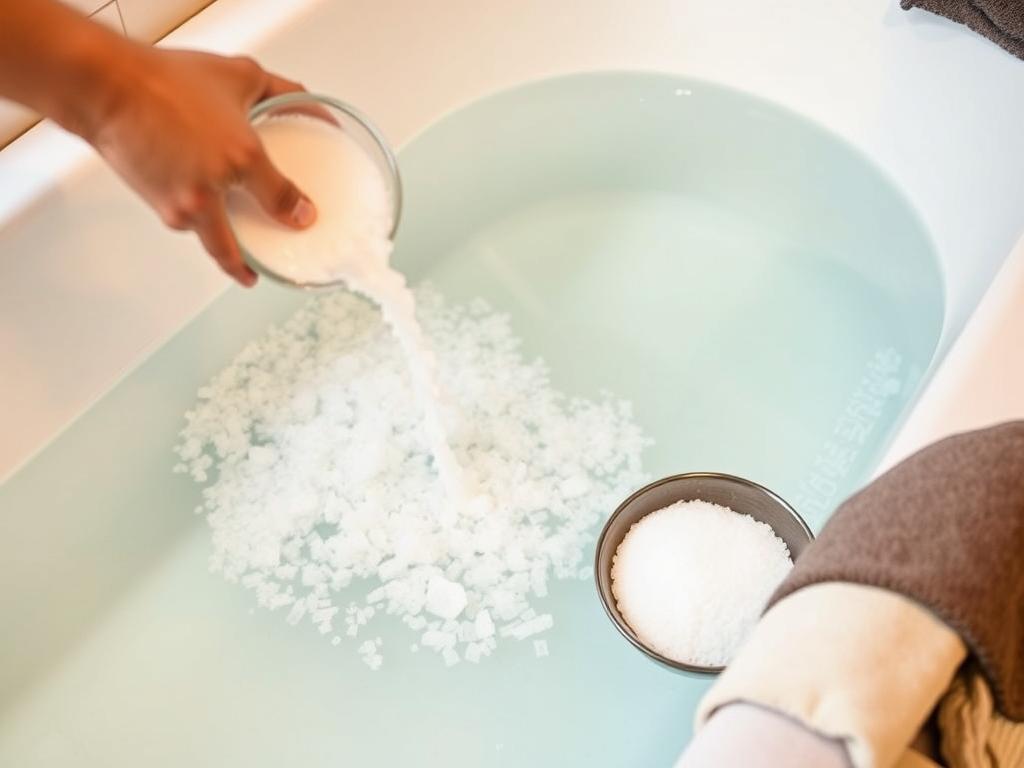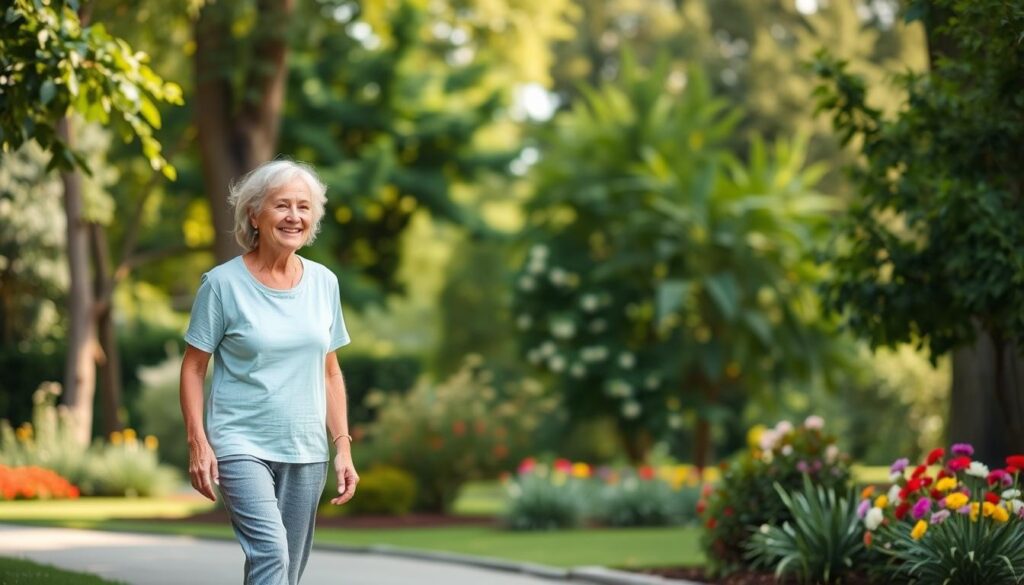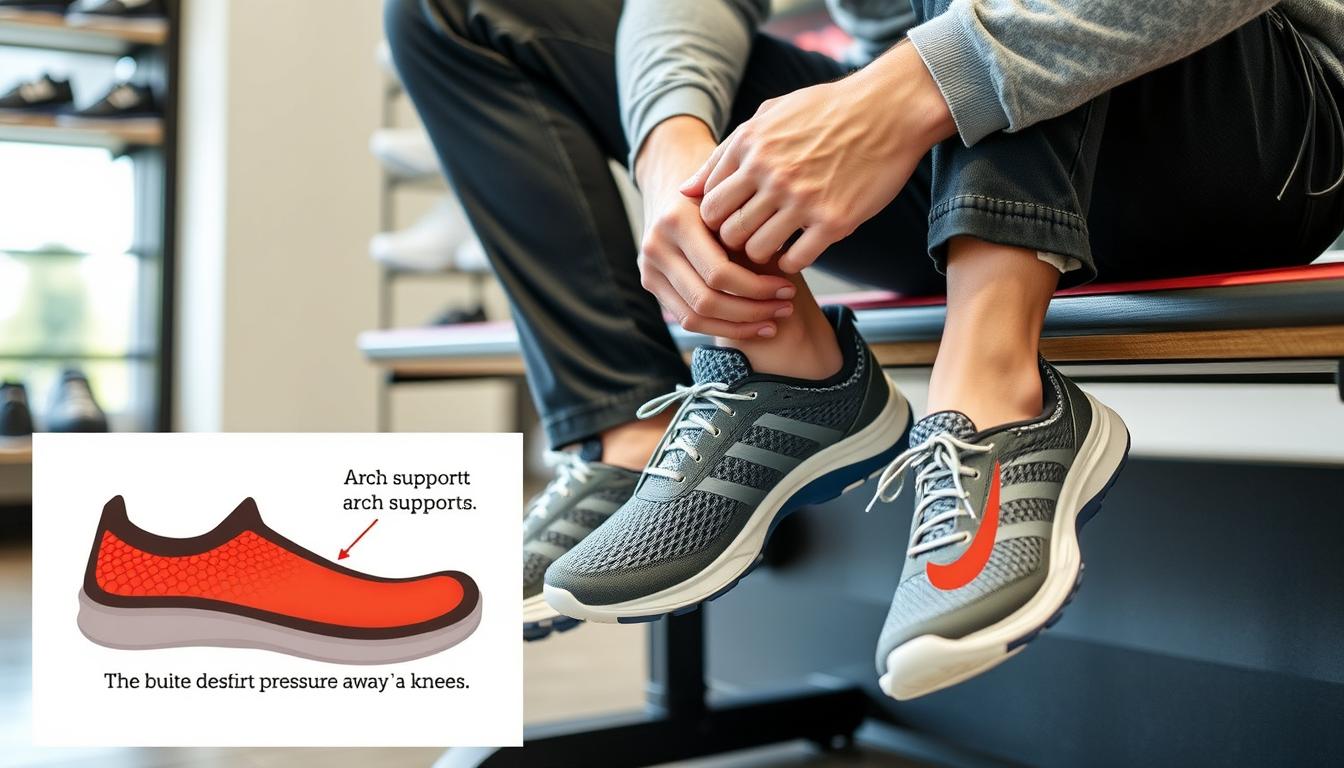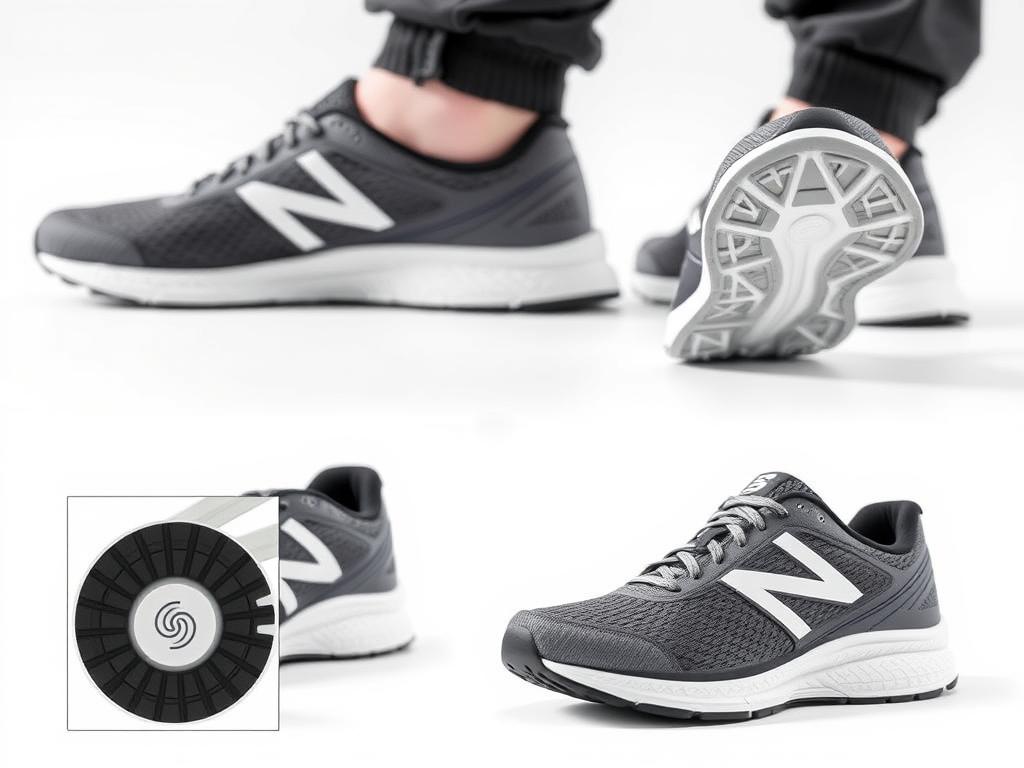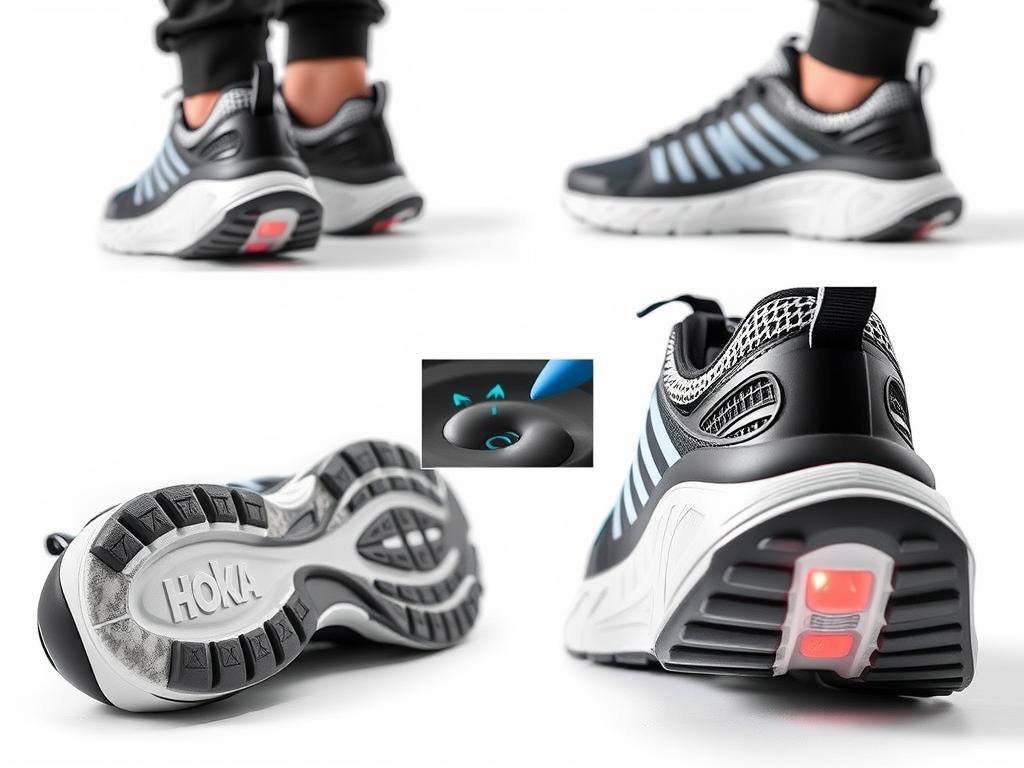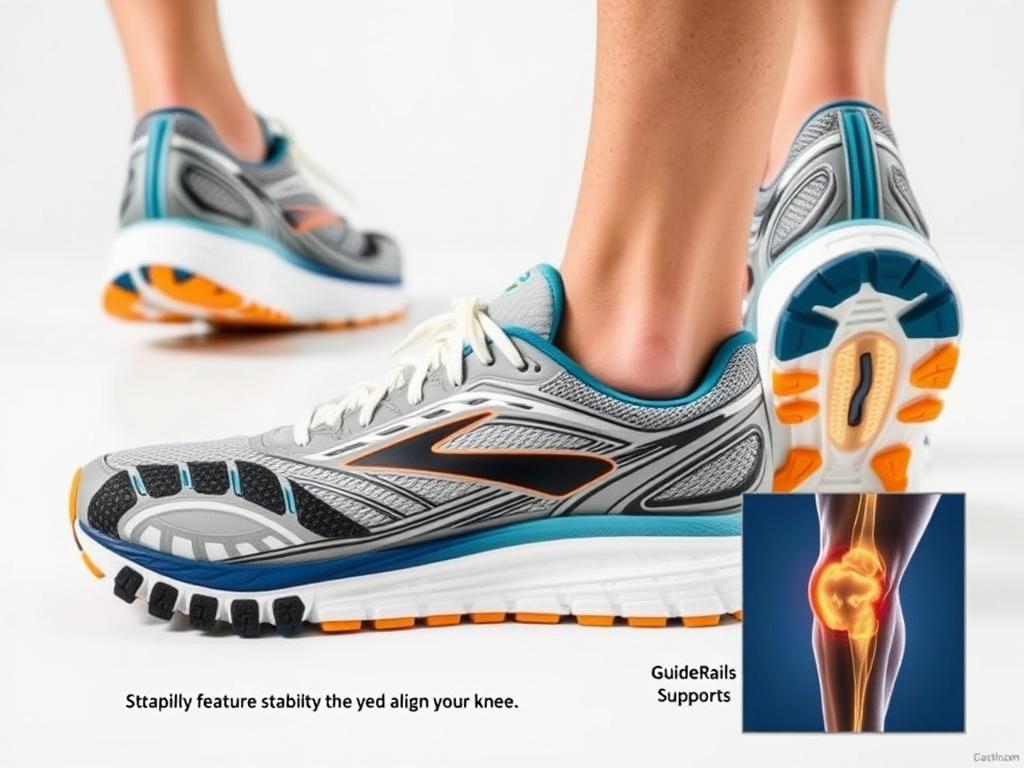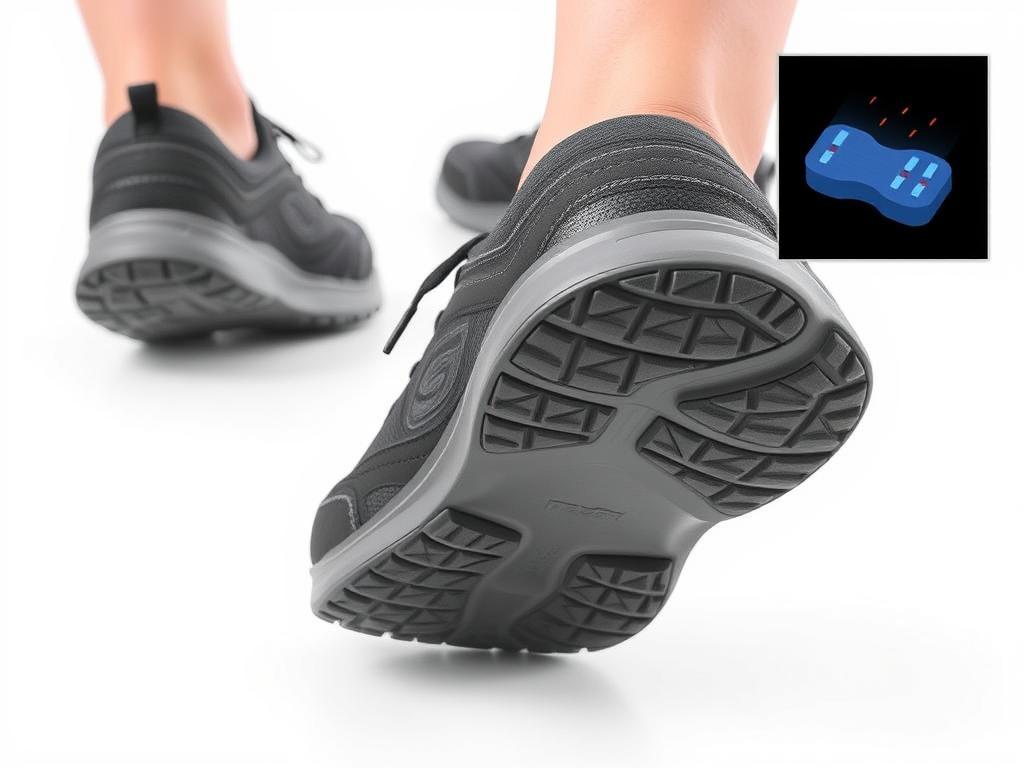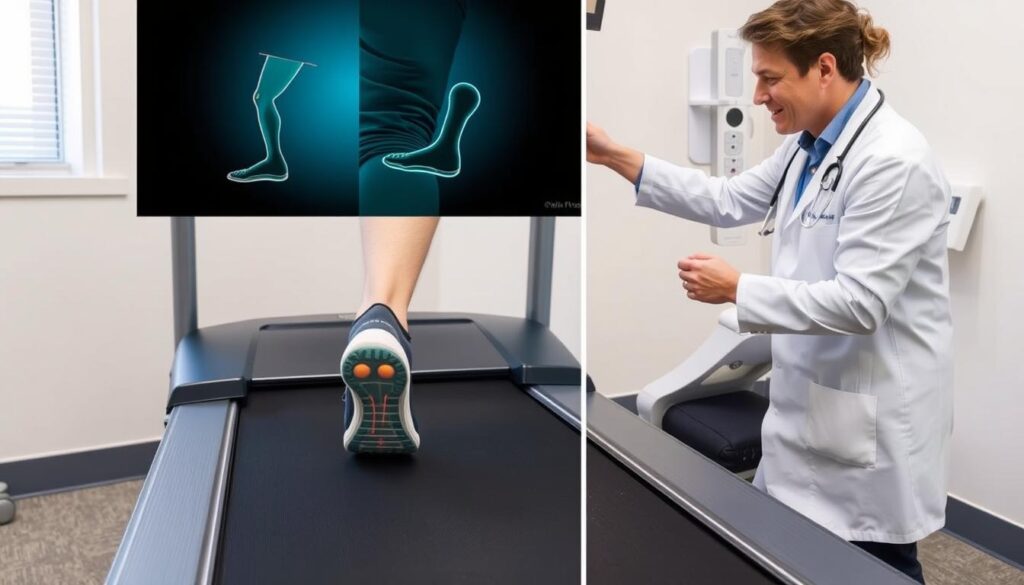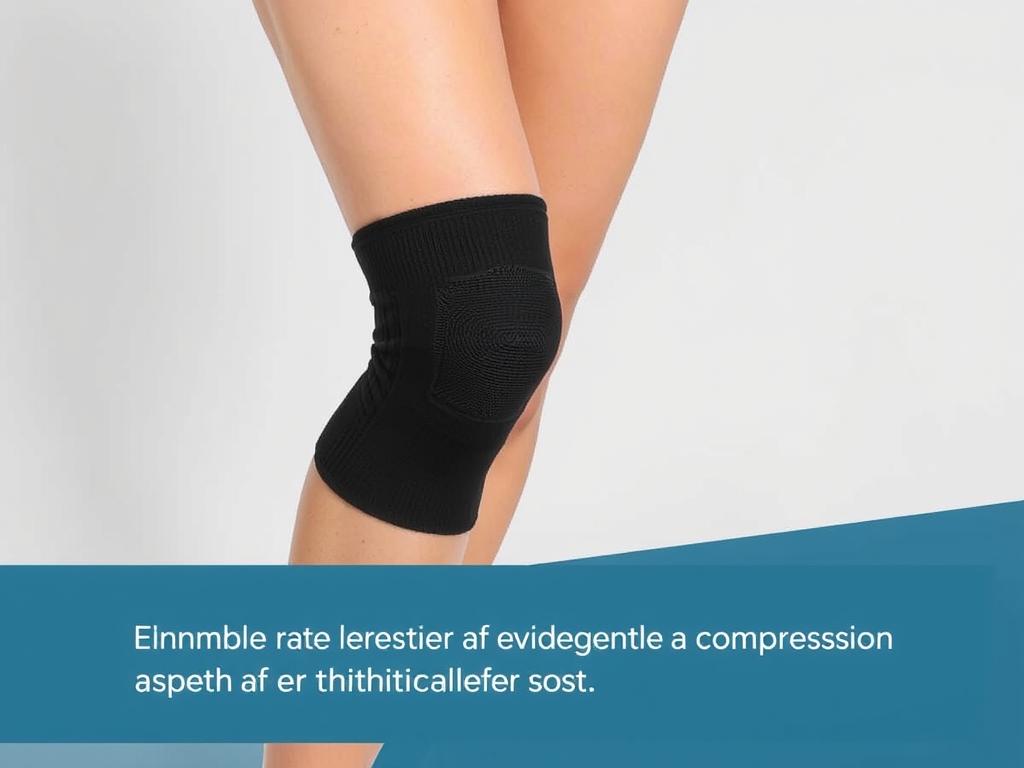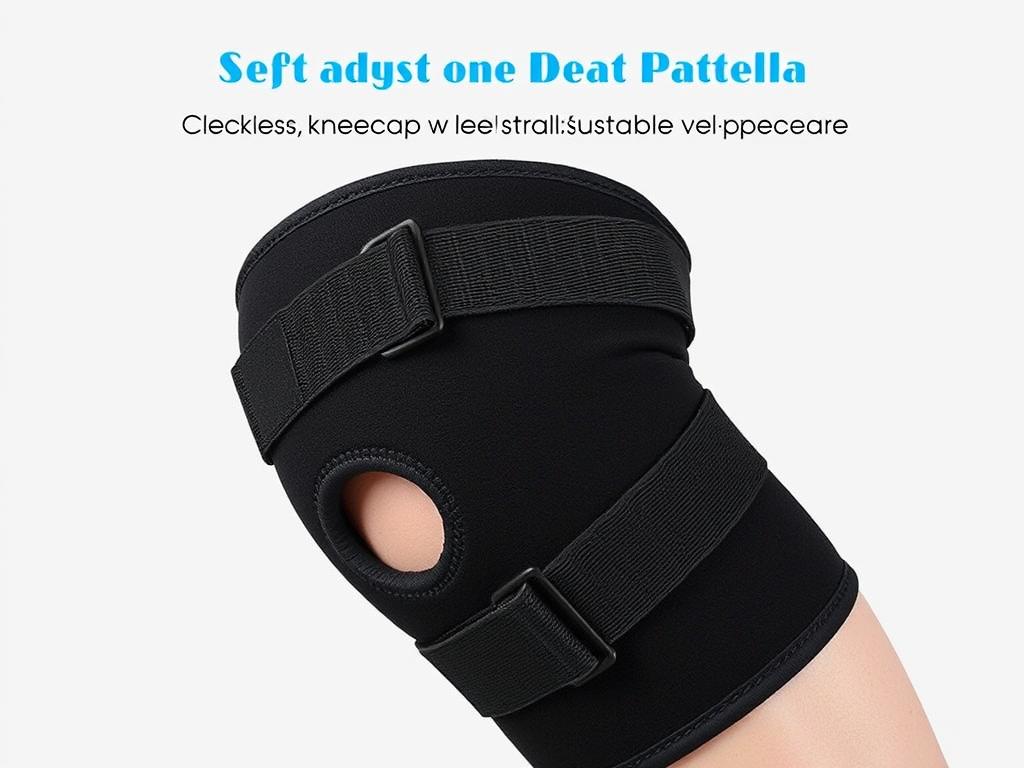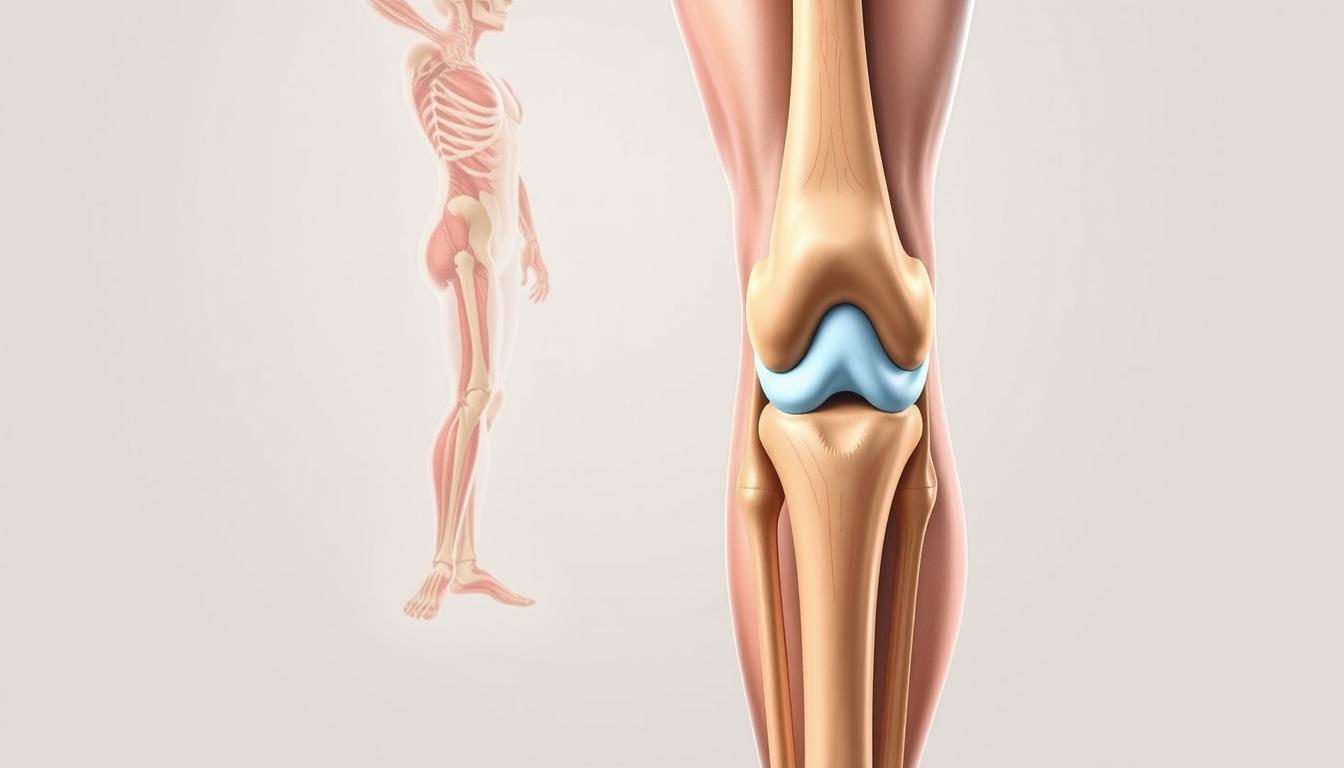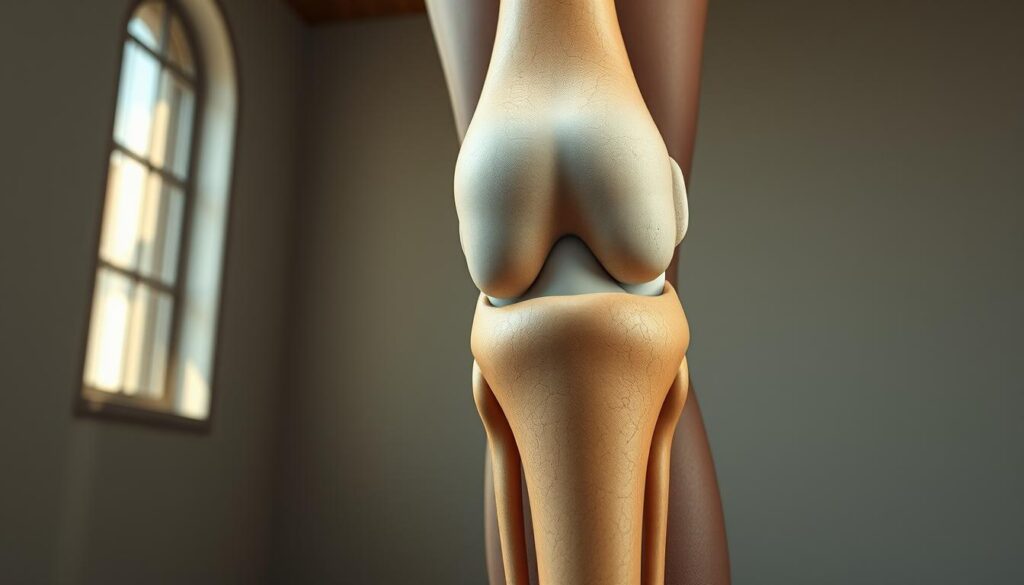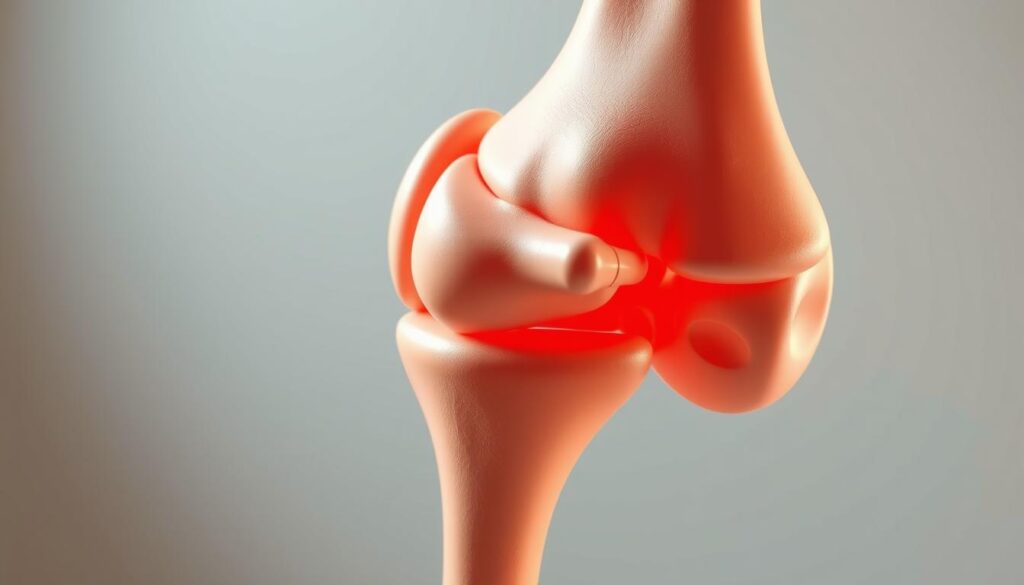That familiar twinge in your knee that appears when you’re walking, only to mysteriously vanish when you rest, can be both puzzling and frustrating. Knee pain that comes and goes while walking affects millions of people, disrupting daily activities and diminishing quality of life. Whether it strikes during your morning stroll, while climbing stairs, or after standing for extended periods, intermittent knee pain can limit your mobility and prevent you from enjoying activities you love.
Understanding why this on-again, off-again pain occurs is the first step toward finding relief. In this comprehensive guide, we’ll explore the common causes of intermittent knee pain while walking, help you distinguish between different types of pain, and provide practical strategies for both immediate relief and long-term management.
Common Causes of On-and-Off Knee Pain While Walking
Intermittent knee pain while walking rarely appears without reason. Several conditions can cause this pattern of discomfort that comes and goes. Understanding these potential causes can help you identify what might be happening in your own knee joint.
Patellofemoral Pain Syndrome
Often called “runner’s knee,” patellofemoral pain syndrome is one of the most common causes of knee pain that comes and goes while walking. This condition occurs when the kneecap (patella) doesn’t track properly over the femur (thigh bone), creating friction and irritation. The pain typically worsens when walking uphill or climbing stairs and improves with rest. You might notice aching around or behind the kneecap that intensifies after sitting for long periods with bent knees.
Meniscus Tears
The meniscus is a C-shaped piece of cartilage that cushions your knee joint. Small tears in this cartilage can cause intermittent pain, especially during twisting movements or when bearing weight on the affected leg. A torn meniscus might cause clicking or catching sensations in addition to pain that comes and goes while walking. The discomfort often worsens after activity and improves with rest.
Early Osteoarthritis
While osteoarthritis is typically associated with constant pain, in its early stages it can manifest as intermittent discomfort. This degenerative joint condition involves the breakdown of cartilage that normally cushions the bones in your knee joint. The resulting pain often starts gradually, coming and going during activities like walking, before potentially becoming more persistent as the condition progresses.
IT Band Syndrome
The iliotibial (IT) band is a thick band of tissue that runs from your hip to the outside of your knee. When this band becomes tight or inflamed, it can cause sharp pain on the outside of the knee that typically comes and goes during walking or running. The pain often starts after you’ve been active for a while and may disappear with rest.
Bursitis
Tiny fluid-filled sacs called bursae cushion the bones, tendons, and muscles near your joints. When these become inflamed, the condition is called bursitis. In the knee, this inflammation can cause pain that worsens with movement and pressure but may subside when resting. The discomfort often comes and goes depending on your activity level.
Mechanical vs Inflammatory Pain: Key Differences
Understanding whether your intermittent knee pain is mechanical or inflammatory in nature can help guide treatment approaches. These two types of pain have different characteristics and often respond to different interventions.
| Characteristic | Mechanical Pain | Inflammatory Pain |
| Onset | Usually sudden, often related to specific movement | Typically gradual, builds over time |
| Timing | Worse with activity, better with rest | Often worse after inactivity (morning stiffness) |
| Swelling | Minimal or localized | Often more pronounced and diffuse |
| Warmth | Rarely present | Area may feel warm to touch |
| Response to NSAIDs | Moderate improvement | Often significant improvement |
Mechanical Pain Explained
Mechanical knee pain is typically caused by physical issues within the joint structure. This might include cartilage tears, bone alignment problems, or issues with how the kneecap tracks. The hallmark of mechanical pain is that it’s directly related to movement and weight-bearing. When you rest, the pain often subsides completely, only to return when you resume walking or other activities that stress the knee joint.
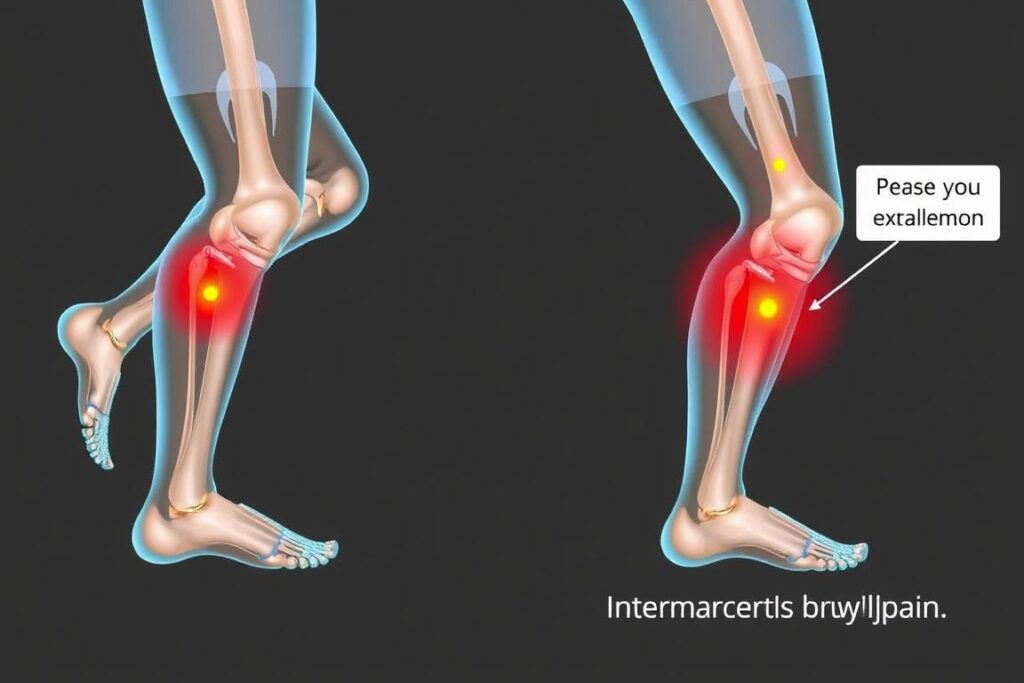
Inflammatory Pain Explained
Inflammatory knee pain results from the body’s immune response causing inflammation in the joint tissues. This type of pain often includes swelling, warmth, and stiffness, particularly after periods of inactivity. While it may also come and goes while walking, inflammatory pain tends to have a less direct relationship with specific movements and may persist to some degree even at rest, especially in the morning or after sitting for extended periods.
When to Worry: Red Flags for Serious Conditions
While most intermittent knee pain while walking isn’t cause for immediate alarm, certain symptoms should prompt you to seek medical attention without delay. Being aware of these warning signs can help you determine when self-care is appropriate and when professional evaluation is necessary.
Seek immediate medical attention if you experience:
- Severe pain that makes weight-bearing impossible
- Significant swelling that develops rapidly
- Visible deformity of the knee joint
- Inability to bend or straighten the knee
- Fever accompanying knee pain
- Redness and significant warmth around the joint
- Pain following a traumatic injury or fall
Even if your symptoms don’t require emergency care, certain patterns of knee pain that comes and goes while walking warrant professional evaluation. Consider consulting a healthcare provider if:
- Your knee pain persists for more than 1-2 weeks despite home treatment
- The pain interferes significantly with daily activities or sleep
- You experience recurrent episodes of knee pain with increasing frequency
- Your knee repeatedly “gives way” or feels unstable when walking
- You notice progressive worsening of symptoms over time
- You have a history of arthritis or previous knee injuries
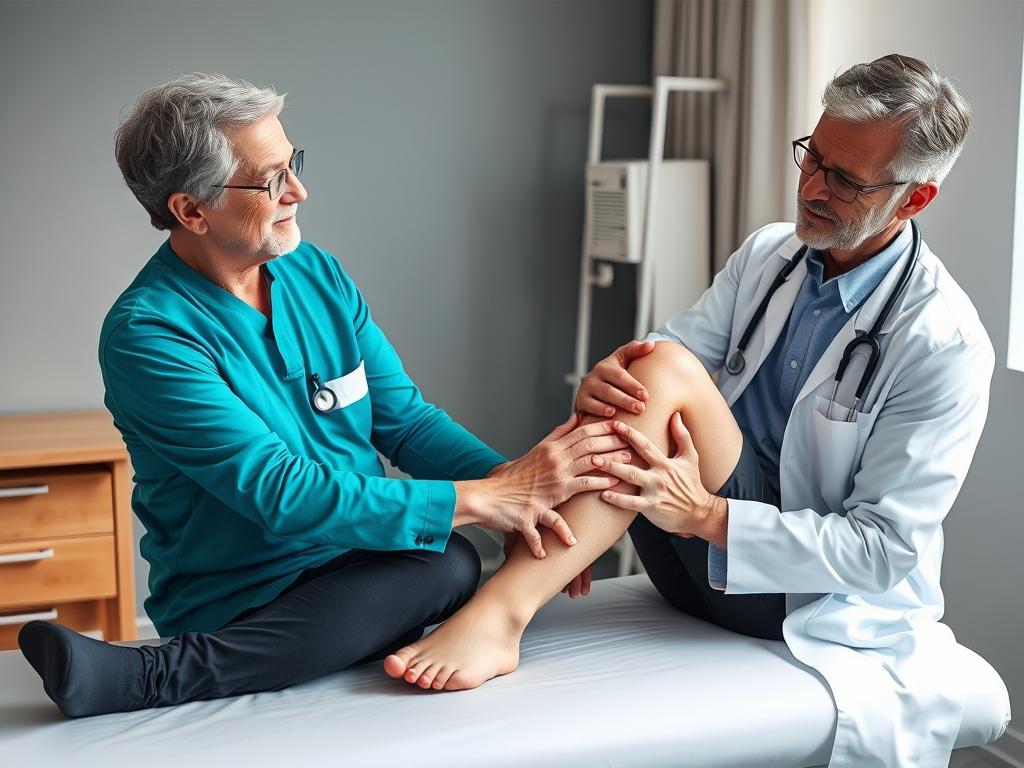
Not Sure About Your Knee Pain?
If you’re experiencing persistent or concerning knee pain that comes and goes while walking, a professional evaluation can provide clarity and peace of mind. Our knee specialists can help determine the exact cause and create a personalized treatment plan.
At-Home Relief Strategies
For many cases of knee pain that comes and goes while walking, simple at-home measures can provide significant relief. These strategies can help manage symptoms while addressing the underlying causes of your intermittent knee discomfort.
The RICE Protocol
The RICE method remains one of the most effective first-line treatments for knee pain, especially when it’s related to minor injuries or overuse:
- Rest: Reduce activities that aggravate your knee pain, but avoid complete inactivity which can lead to stiffness and muscle weakness
- Ice: Apply ice to the painful area for 15-20 minutes every 2-3 hours to reduce inflammation and numb pain
- Compression: Use an elastic bandage to provide support and reduce swelling, but not so tight that it impairs circulation
- Elevation: Keep your leg elevated when sitting or lying down to help minimize swelling
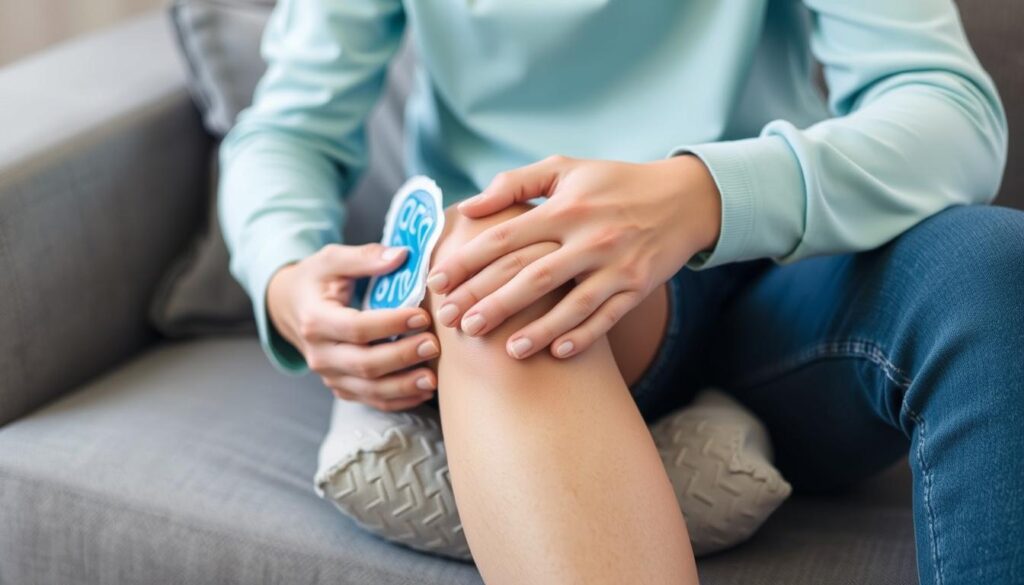
Stretching and Strengthening Exercises
Gentle stretching and targeted strengthening exercises can help address muscle imbalances that may contribute to knee pain that comes and goes while walking:
- Quadriceps stretch: Stand holding onto a wall for balance, bend your knee and bring your foot toward your buttock, hold for 30 seconds
- Hamstring stretch: Sit with one leg extended, reach toward your toes while keeping your back straight, hold for 30 seconds
- Straight leg raises: Lie on your back, keep one knee bent and the other straight, lift the straight leg about 12 inches off the ground
- Wall sits: Stand with your back against a wall, slide down until your knees are bent at about 45 degrees, hold for 10-30 seconds
- Calf raises: Stand with feet shoulder-width apart, rise onto your toes, then slowly lower back down
Start slowly with any new exercise routine. Begin with 5-10 repetitions of each exercise, gradually increasing as your strength improves. Stop immediately if any exercise causes sharp pain.
Footwear and Support
Proper footwear can significantly impact knee pain that comes and goes while walking:
- Choose shoes with good arch support and cushioning
- Replace walking or running shoes every 300-500 miles
- Consider specialized insoles or orthotics if you have flat feet or high arches
- Use a knee brace or sleeve for additional support during activities
- Avoid high heels and completely flat shoes that lack support

Over-the-Counter Pain Relief
Non-prescription medications can help manage pain and inflammation:
- Nonsteroidal anti-inflammatory drugs (NSAIDs) like ibuprofen or naproxen can reduce both pain and inflammation
- Acetaminophen (Tylenol) can help with pain but doesn’t address inflammation
- Topical analgesics (creams, gels) can provide localized relief without systemic side effects
Always consult with your healthcare provider before starting any new medication regimen, especially if you have other health conditions or take other medications.
Get Our Free Knee-Friendly Exercise Guide
Download our comprehensive guide to gentle exercises specifically designed to strengthen the muscles supporting your knee joint and reduce pain while walking.
Professional Treatment Options
When at-home measures aren’t enough to address knee pain that comes and goes while walking, several professional treatment options can provide relief and address underlying causes.
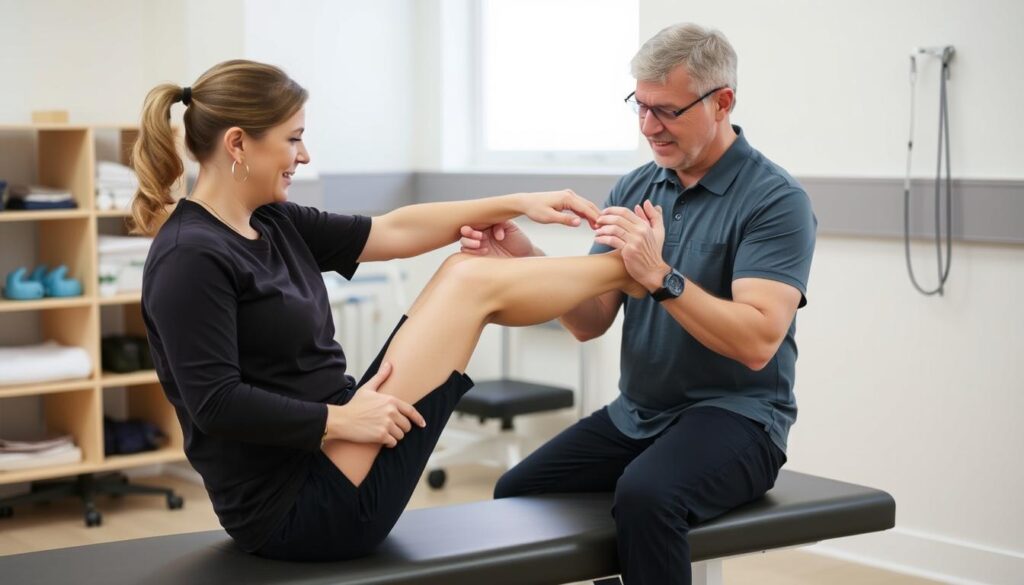
Physical Therapy
A physical therapist can develop a customized program to address the specific causes of your knee pain that comes and goes while walking. This typically includes:
- Targeted exercises to strengthen muscles supporting the knee joint
- Manual therapy techniques to improve joint mobility
- Gait analysis to identify and correct walking patterns that may contribute to pain
- Education on proper body mechanics for daily activities
- Modalities such as ultrasound or electrical stimulation for pain relief
Medical Interventions
Depending on the underlying cause of your intermittent knee pain, a doctor might recommend:
- Prescription-strength anti-inflammatory medications
- Corticosteroid injections to reduce inflammation in the joint
- Hyaluronic acid injections to supplement joint lubrication
- Platelet-rich plasma (PRP) therapy to promote healing
- Bracing or taping techniques to improve joint alignment
Surgical Options
Surgery is typically reserved for cases where conservative treatments haven’t provided relief. Depending on the specific condition causing your knee pain that comes and goes while walking, surgical options might include:
- Arthroscopy to repair damaged cartilage or remove loose fragments
- Partial or total knee replacement for advanced joint degeneration
- Ligament reconstruction for instability issues
- Realignment procedures to correct structural problems
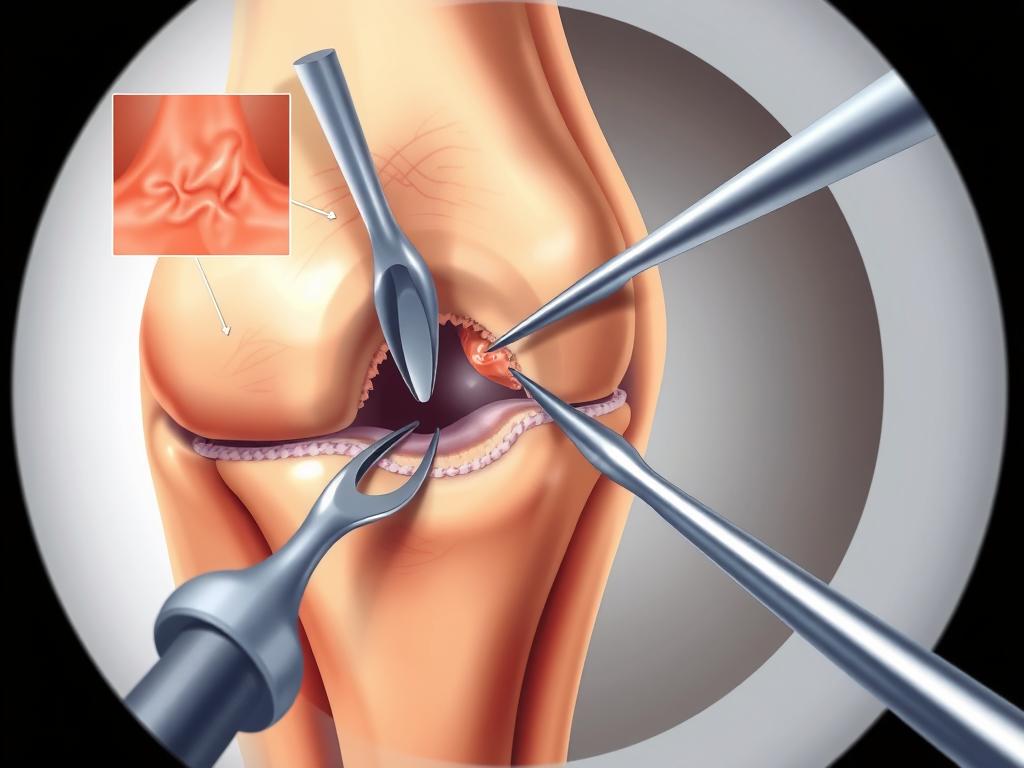
Most cases of knee pain that comes and goes while walking can be successfully managed with non-surgical approaches. Surgery is typically considered only after conservative treatments have been given adequate time to work.
5 Key Prevention Strategies for Intermittent Knee Pain
Preventing knee pain that comes and goes while walking is often easier than treating it once it develops. These five strategies can help keep your knees healthy and pain-free.
- Maintain a healthy weight
Every extra pound puts additional stress on your knee joints. Even modest weight loss can significantly reduce pressure on your knees and decrease pain while walking. For every pound lost, there’s a four-pound reduction in the load exerted on the knee during daily activities.
- Build strength in supporting muscles
Strong quadriceps, hamstrings, and calf muscles help stabilize the knee joint and absorb shock during walking. Incorporate low-impact strength training exercises like swimming, cycling, or using an elliptical machine at least 2-3 times per week.
- Improve flexibility and range of motion
Regular stretching helps maintain proper joint function and prevents the muscle tightness that can contribute to knee pain. Focus on stretching the quadriceps, hamstrings, calves, and iliotibial band to support healthy knee movement.
- Use proper footwear and walking technique
Wear supportive shoes appropriate for your foot type and walking surface. Pay attention to your walking mechanics—maintain good posture, take reasonably sized steps, and allow your foot to roll naturally from heel to toe.
- Progress activity levels gradually
Sudden increases in walking distance or intensity can overwhelm your knee joints. Follow the 10% rule—don’t increase your activity level by more than 10% per week—to give your body time to adapt to new demands.
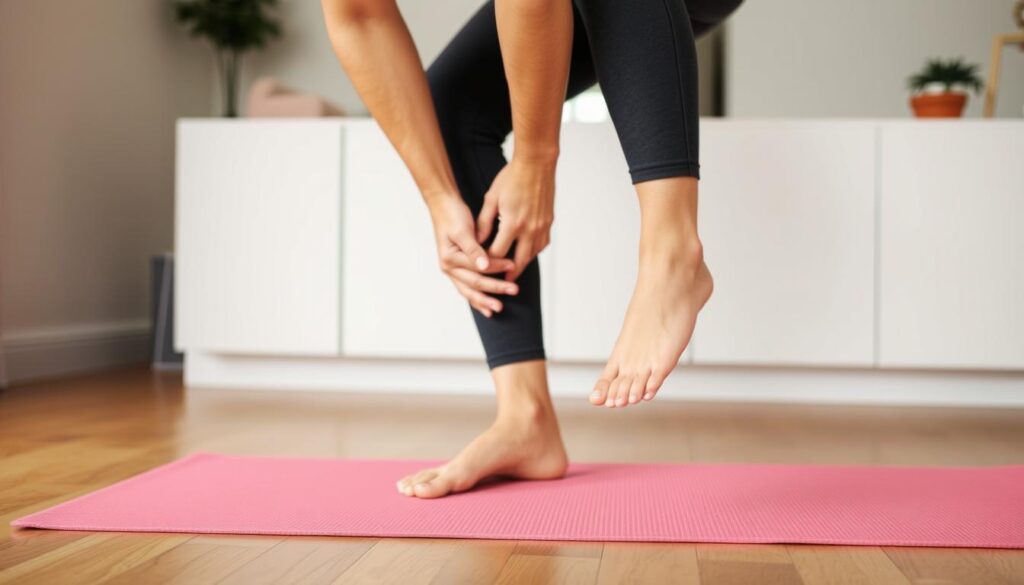
Frequently Asked Questions
Is walking good for knee pain?
Walking can be beneficial for many types of knee pain, as it strengthens the muscles supporting the joint without high impact. However, if walking consistently worsens your knee pain that comes and goes, it’s important to modify your approach. Try walking shorter distances, walking on softer surfaces like grass or a track instead of concrete, or using walking poles to reduce knee stress. If pain persists or worsens with walking, consult a healthcare professional to rule out conditions that might be aggravated by walking.
Why does my knee pain come and go while walking but not at rest?
Knee pain that appears during walking but subsides at rest typically indicates a mechanical issue within the joint. When you walk, your knee bears weight and moves through its range of motion, which can trigger pain if there are problems with alignment, cartilage, or tracking of the kneecap. Common causes include patellofemoral pain syndrome, meniscus tears, or early osteoarthritis. The absence of pain at rest suggests that inflammation might not be the primary driver of your symptoms, though some inflammatory conditions can also follow this pattern in their early stages.
How long should I rest my knee if I experience pain while walking?
For knee pain that comes and goes while walking, complete rest is rarely the best approach. Instead, consider relative rest—reducing activities that provoke pain while maintaining gentle movement to prevent stiffness and muscle weakness. If you experience a sudden increase in knee pain, taking 1-2 days of reduced activity followed by a gradual return to walking is often appropriate. Apply ice after walking if pain occurs, and consider using a knee brace for support during activities. If pain persists beyond 1-2 weeks despite these measures, consult a healthcare provider for evaluation.
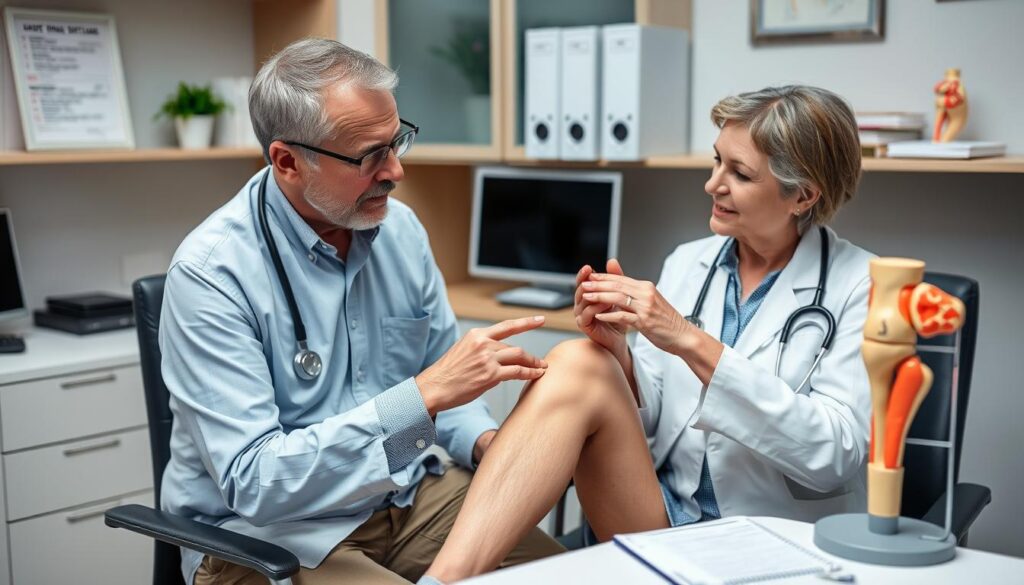
The 3 Most Likely Diagnoses for Intermittent Knee Pain While Walking
Patellofemoral Pain Syndrome
This condition, often called “runner’s knee,” is characterized by pain around or behind the kneecap that typically worsens when walking upstairs, hiking uphill, or after sitting with bent knees for extended periods.
Key Symptoms:
- Dull, aching pain around the kneecap
- Pain worsens with stairs, squatting, or kneeling
- Occasional grinding sensation when bending the knee
- Pain that comes and goes depending on activity level
- Often affects both knees
Meniscus Tear
The meniscus is a C-shaped piece of cartilage that cushions your knee joint. Tears can occur from sudden twisting movements or develop gradually with age, causing pain that comes and goes while walking, especially with pivoting or twisting motions.
Key Symptoms:
- Pain along the joint line (inside or outside of knee)
- Catching or locking sensations
- Swelling that develops hours after activity
- Difficulty fully straightening the knee
- Pain that worsens with pivoting or twisting
Early Osteoarthritis
In its early stages, knee osteoarthritis often manifests as intermittent pain during weight-bearing activities like walking. This degenerative condition involves the gradual breakdown of cartilage in the knee joint.
Key Symptoms:
- Pain that develops gradually over months or years
- Morning stiffness that improves within 30 minutes
- Pain that worsens toward the end of the day
- Mild swelling after extended activity
- Occasional clicking or crunching sounds
| Symptom Comparison | Patellofemoral Pain | Meniscus Tear | Early Osteoarthritis |
| Pain Location | Around or behind kneecap | Joint line (side of knee) | Throughout knee, often deep |
| Pain Onset | Gradual | Often sudden with injury | Very gradual |
| Age Group Most Affected | 15-45 years | All ages (traumatic in young, degenerative in older) | Usually over 50 |
| Swelling | Minimal | Often present | Mild to moderate |
| Locking/Catching | Rare | Common | Occasional |
| Morning Stiffness | Minimal | Minimal | Common (usually |
Taking Control of Your Knee Health
Knee pain that comes and goes while walking doesn’t have to limit your mobility or quality of life. By understanding the potential causes, recognizing warning signs, and implementing appropriate self-care strategies, you can effectively manage many types of intermittent knee pain. Remember that early intervention often leads to better outcomes, so don’t hesitate to seek professional guidance if your symptoms persist or worsen despite home treatment.
Whether your knee pain stems from a mechanical issue like patellofemoral pain syndrome, a cartilage problem like a meniscus tear, or early degenerative changes, there are effective treatment approaches available. By combining proper self-care with professional guidance when needed, you can develop a comprehensive plan to address your specific knee condition and return to pain-free walking.
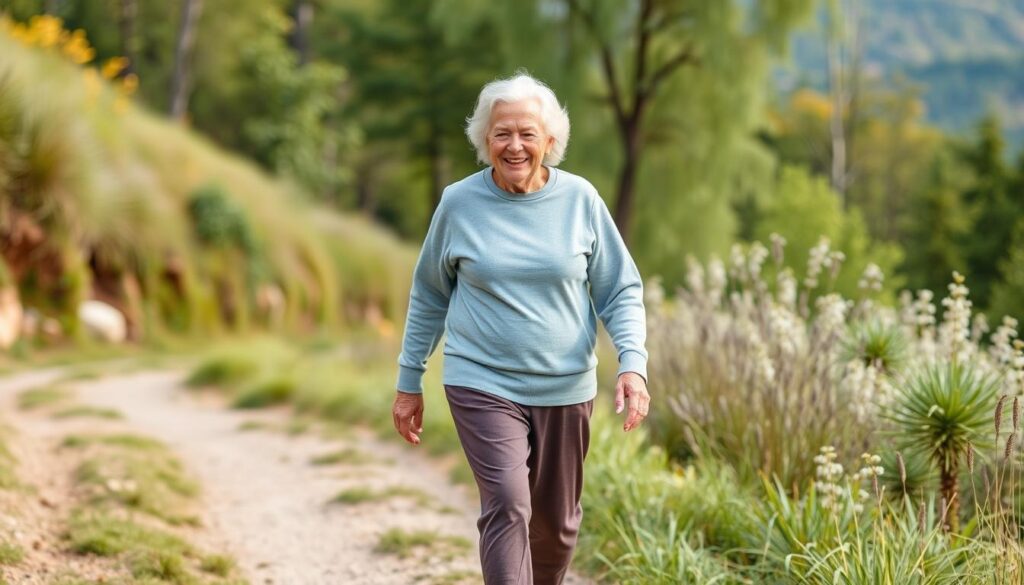
Ready to Address Your Knee Pain?
Our team of specialists can help diagnose the exact cause of your knee pain that comes and goes while walking and develop a personalized treatment plan to get you back to the activities you love.
